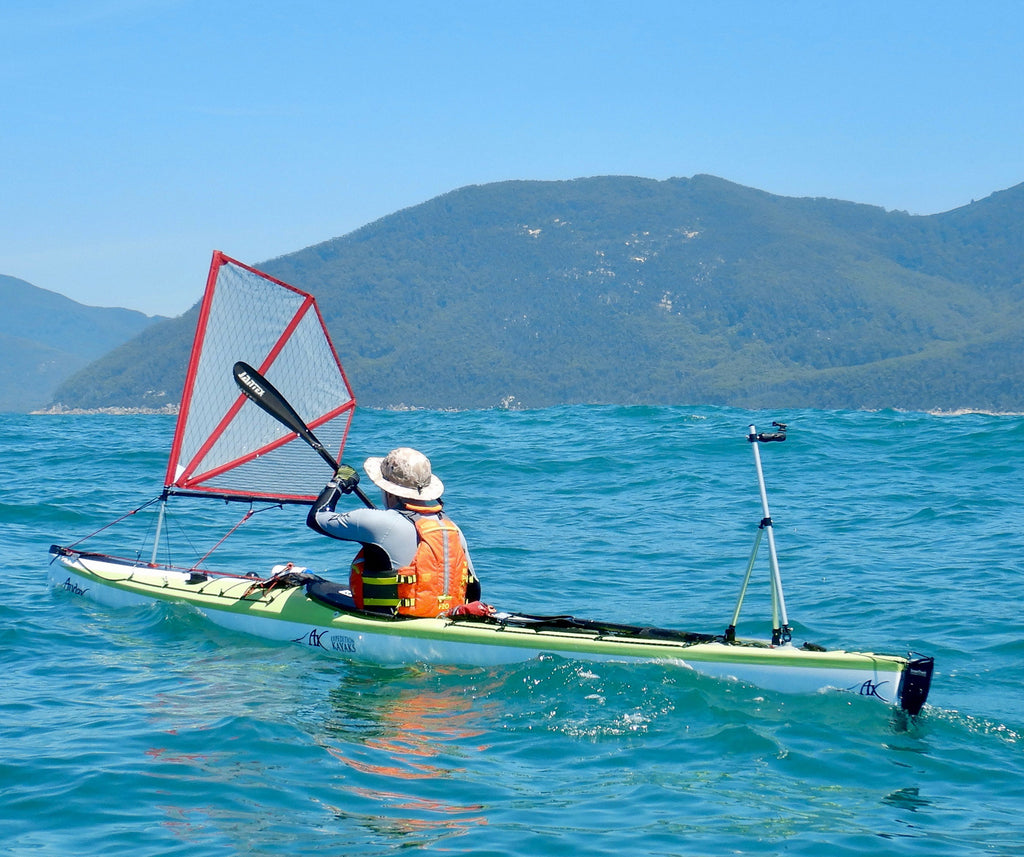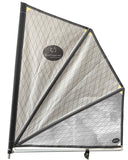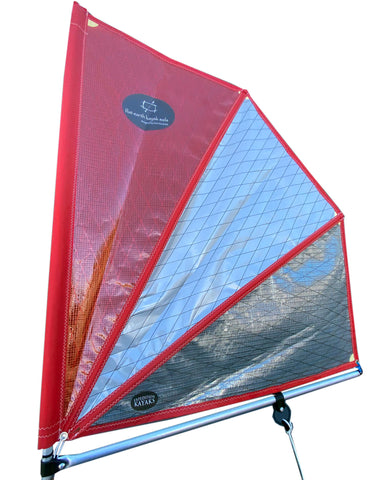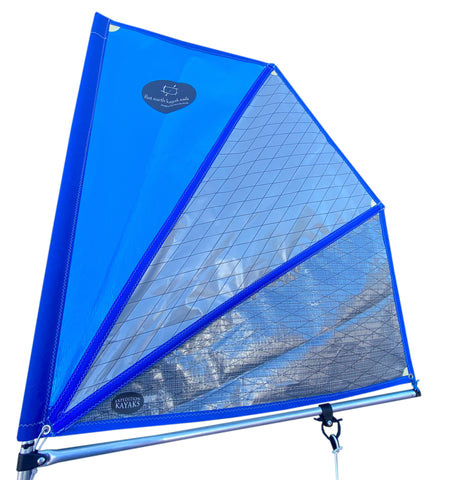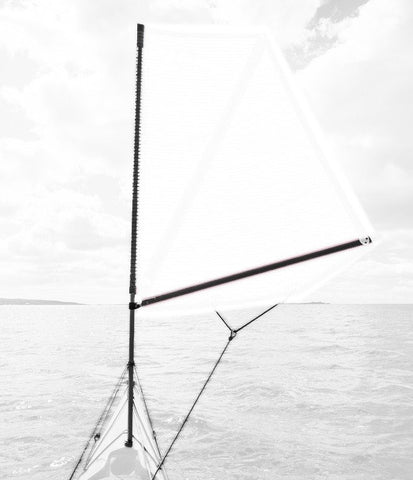INTERNATIONAL (OUTSIDE AUSTRALIA) CUSTOMERS CLICK HERE
STOP PRESS: REVIEW FROM DOUGLAS WILCOX AT SEAKAYAKPHOTO HERE.
Below you can see a photograph of me from our 2004 unsupported expedition from Cooktown almost 1000km along the Cape York Peninsula to Sesia in Torres Strait. It remains one of the highlights of my time on the sea and provided the group with many wonderful days of surfing the SE tradewinds.
Obviously the picture was taken in the lee of a headland so out of the wind but I have chosen it because it provides a good view of the sail itself.
This was my first three panel sail, it was designed and made by my good mate Andrew Eddy specifically for this trip. He had already used the same design on this and many previous trips.
From the late 1990s until the present I have been fascinated by kayak sails and curious about the relative merits of different shapes and sizes.
In more recent times I have used the various Flat Earth Sails including the Original, Code Zero and Tradewind models, these are Mick’s most notable legacy to kayak sail design and I continue to enjoy these sails for their ease of use, efficiency and simplicity. To my mind they are less aggressive and a little easier to use than the three panel sails with their ability to “spill” some of the extra heeling force caused by gusts, but I have always appreciated the performance offered by the three panel designs and had started work on a three panel sail with Mick only a year or so before he passed away.
As part of this process Andrew Eddy was kind enough to send him vital information about the original sail and after much deliberation Mick sent me a beautifully crafted prototype based on his interpretation of the Andrew’s pattern. The original worked best with a full load and a straight tracking kayak, Mick maintained the stable shape and power of this sail but in a more compact and easily manageable form and then he went over the original material selection and design with his meticulous eye for detail.
I was immediately delighted with the result and once out on the water, felt how taut the sail was in fresh winds, a characteristic we had valued so highly using the original in the big “tradies” north of Cooktown all those years ago.
There were a few hardware and design issues I needed to talk through with Mick before it was ready for the final test and to take to market but sadly we never got to finish the project…
Recently with the backorders of Flat Earth Sails finally under control, master sail maker Neil Tasker has been helping me fine-tune the design. I tested Mick’s prototype on a trip in North Queensland last year and then came back to Neil with some suggestions that in turn lead to several tweaks and hardware changes.
I have included pictures of this design from our recent Bass Strait Crossing, and video of the sail in action in the two minute clip at the top of the page (noting that none of the sailing in the video is in dead downwind conditions, in fact most of it is nearly beam-on).
The hardware was from Mick’s Prototype and featured a fiberglass tubular boom with the sail loose footed as in the original (we have subsequently replaced the fiberglass with an aluminium boom for greater durability). The sail performed very well with a loaded boat and held its optimal shape further off the wind than the Tradewind Sails being used by the rest of the group. I was delighted with the result and look forward to using this design again on my next trip.
It is important to note that this performance does come at a cost and that is the slightly higher heeling force applied to the kayak when sailing across the wind, and more notable, the greater acceleration when driven by gusts. This extra push onto the waves will exhilarate some and maybe intimidate others. For these reasons I see this as more of a sail for experienced kayak sailors looking for more outright drive to catch running seas and/or those paddling heavy kayaks. If you like to cruise with the sail up and want a more relaxed ride or you have not sailed before then I would expect the tried and trusted Trade Wind series is still for you.
Throughout eighteen months of testing, one of the features of this sail that distinguished it from most others in the kayaking world was the way the boom attaches to the cloth by simply being tied off to an end cap rather than having a pocket stitched into the sail to enclose the boom. This elegant, minimalist design feature has always performed well for me. Among it’s many virtues are ease of service and the ability to position the sheetline anywhere along the length of the boom for direct attachment. For this reason we have decided to name this sail the: “Footloose 80”
I know Mick was curious but not convinced about this three panel sail design so he was pleasantly surprised with the results when I reported back to him. Mick believed these designs would never replace the original Flat Earth sails and I think he was right, so we consider the Footloose 80 more as an addition to the range; a compact sail ideally suited to those experienced and adventurous kayaker sailors chasing some more performance without going to a bigger sail.
Note, all Flat Earth Sails come complete with all fittings & fixtures required to fit your sail. You don't need any extra hardware.
PLEASE NOTE, transporting any of our sails on the roof of a vehicle will void any warranty. Please take it off the kayak and stow it inside your vehicle if you’re transporting.

